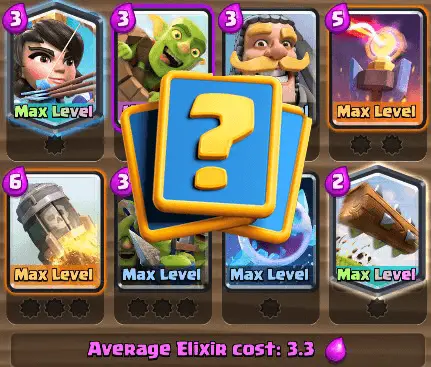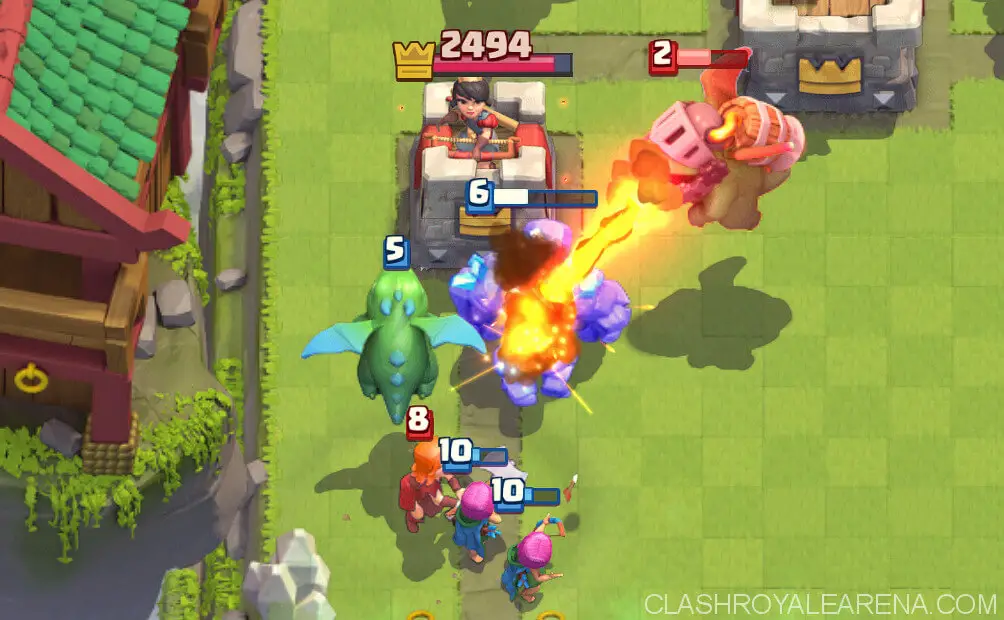Hey! Nitrome95 back with another Clash Royale guide. If you know who I am, congrats, you’re old!
While looking at my past articles, I found my Ultimate Guide to Improving your Skills in Clash Royale guide where I mentioned some advanced techniques that I didn’t elaborate much on. These are the most important skills that, in my opinion, separate the good, great, and pro players.
Today, we will be looking at Card Rotation, what it is, how to use it to your advantage, and how to practice it in real matches! If you guys like this series, I have lots of other ideas, including win conditions, resource management, and matchups that I could share my expertise on. Nevertheless, let’s get to the guide!
What is Card Rotation?
When both you and your opponent start a match, each of you receives four cards in your starting hand. In addition, the four cards that are not in your starting hand will come into your hand at a random order, replacing the last card you played. The first four cards in your rotation are determined by what cards are not in your starting hand. After you play four cards, the 5th card in your rotation will be the 1st card you played, the 6th will be your 2nd, etc.
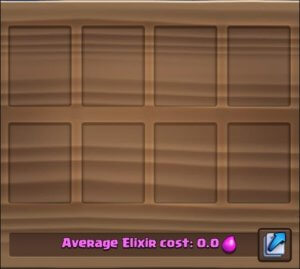
In other words, when you play a card, you need to place four more cards to get back to it. That means you can know exactly when you will receive which cards, and more importantly, when your opponent gets their cards. Theoretically, you can memorize their entire hand at all times and know what they want to do at all times. In practice, there is too much to do in a match to be able to exactly do this. Therefore, we will try to get as much value from keeping track of rotation using this technique.
Counter Web
Keep a mental track of which of your cards counter your opponent’s cards. When starting, it is best to focus on your opponent’s cards that you only have 1 or 2 counters to. For example, if your only air targeting troops are Ice Spirit and Musketeer, you should save them for your opponent’s Balloon.
Visually, this can be seen as a web, where cards are connected to each other based on their counters. If you can visualize this, you can attack and defend smarter. For example, if you know that your only counter to Wizard and Valkyrie is Knight (because all your other troops are log bait), you should not waste your Knight on defending a Furnace. Instead, you can use your Ice Spirit, which is much less effective against those troops.
Or, if they have a Valkyrie in their hand, you shouldn’t waste your elixir on a Goblin Gang at the bridge.
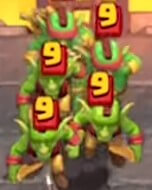
If you are playing a “fast deck”, or a deck that has a very low elixir cost, your goal is to put your opponent in a bad cycle. This means that they never have the counters necessary to counter your offensive pushes. This is because you can place so many more cards than your opponent, allowing you to control where and when you get certain cards.
You can place your opponent in extremely awkward positions if they are not careful.
For instance, a classic move for Xbow cycle players is to place it defensively. When I first saw this movie, I was like, “good job idiot now you wasted 6 elixir and can’t attack”. Now, I realize how smart of a move it is.
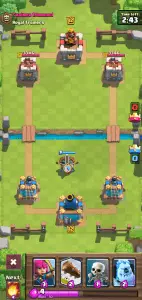
Because it costs 6 elixir, it forces your opponent to place something or else they leak elixir before you do. Swarms are ineffective because of Xbow’s high dps and fire speed. Mini tanks are not great because they are often slow and easily countered on the xbow’s side. Thus, it is
The best option to defend (it seems), is to place down a tank. But what if I told you that’s what the Xbow player wants? The biggest counter to Xbow is a reactive tank. By having the Xbow player place their Xbow, it forces a reactive tank without an elixir commitment of pushing and the added defensive value of the Xbow. Then, they can cycle to their next xbow super fast and blow the tank player out of the water.
The Xbow player puts the beatdown player in an awkward situation because it forces the beatdown player to make the first move. They won’t have their tank counter to your Xbow when they need it most. If the beatdown player then tries to defend, they will likely put themselves at an elixir deficit from spamming troops. At that point, it’s a free win.
What can you do as a beatdown player to counter such a strategy? If you notice, beatdown decks have lots of “multi-utility cards”, meaning that they are expensive cards that have lots of uses. A baby dragon can serve as splash defense, ground only killer, offense, and decent air killing capabilities. Because of this, it is harder for them to stay out of cycle. They always have an all-purpose counter in hand.
You should exploit this aspect of slow decks. Instead of trying to keep up with the volume of cards played by a fast deck, you should focus on playing as little cards as possible to conserve your elixir. Because slow decks often spam lots of cheap, fragile troops, a single hefty troop can easily gain lots of elixir value without taking much damage.
Basically, patience is key!
Mirror Matchups
This is where cycle matters the most. Why? You and your opponent have the same offensive and defensive capabilities. If you can play cards when your opponent doesn’t have counters, it’ll feel like it’s a hard matchup!

(Hey will can you put an image of the deck – Princess, goblin gang, rocket, log, goblin barrel, knight, inferno, and ice spirit).
Consider a mirror bait matchup. Player one plays Goblin Barrel, player two plays Log. Player two plays Goblin Barrel, player one plays Log. Player one plays a Princess in back. Player two plays Knight to counter. Player one plays Goblin Gang to counter. Player two plays Princess to counter. Player one plays Knight to counter.
If you can visualize the interaction, you will see that neither player took damage, both played the same exact cards, and a whole lot of nothingness happened. You have to break the cycle.
Consider an alternate scenario with the same decks. Player one plays Goblin Barrel. Player two Logs. Player two plays Goblin Barrel but player one Goblin Gang counters and takes two stabs. Then, player two split lane Goblin Barrels. Now, player two must deal with two Log bait threats with no Log!
TLDR, if you see a whole lot of nothingness happening on the board, change it up as long as you don’t put yourself in danger.
Conclusion
Hopefully, lots of examples made it clear how one should approach card rotation. A lot of pros will suggest to just “memorize the hand”, but honestly there are much more interesting and practical applications. I hope that a lot of what I said is obvious, but makes more sense when it is put into words rather than some abstract idea. That way, if you’re playing badly, you can remember this guide to untilt yourself.
Once again, let me know if you want more guides to take your play to the next level!

